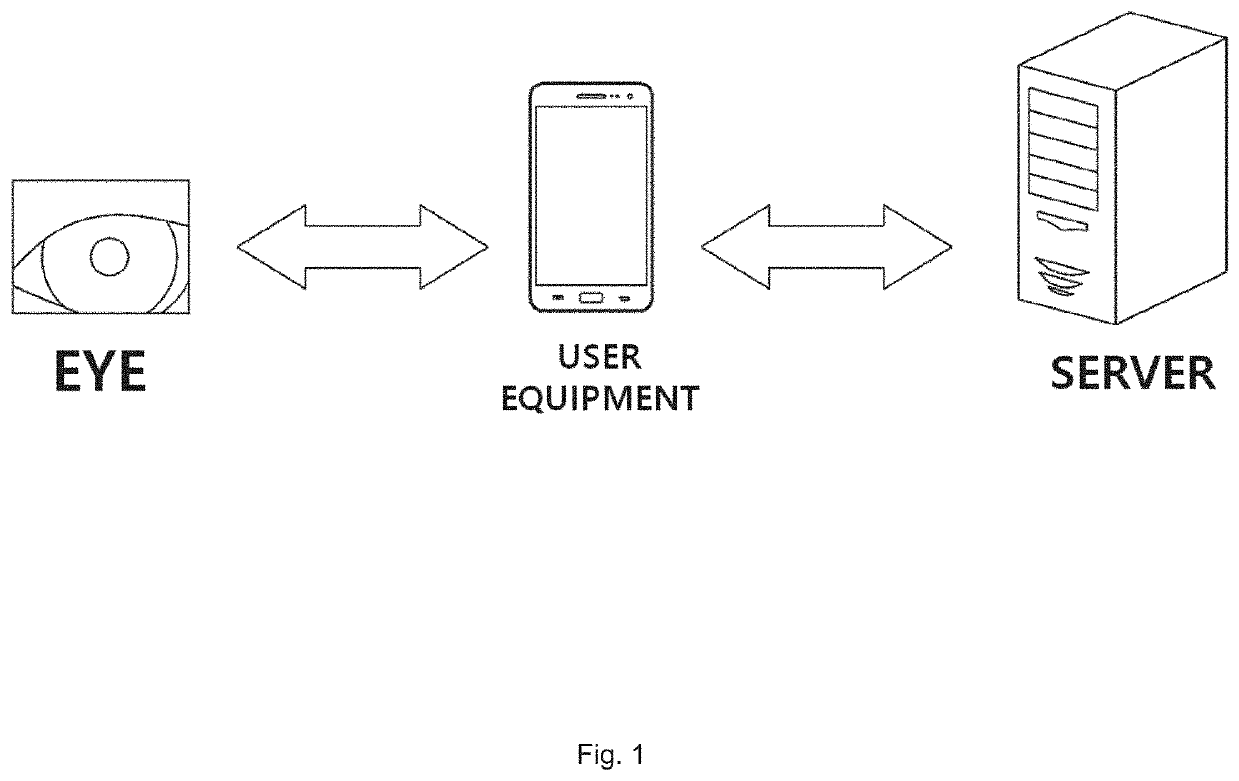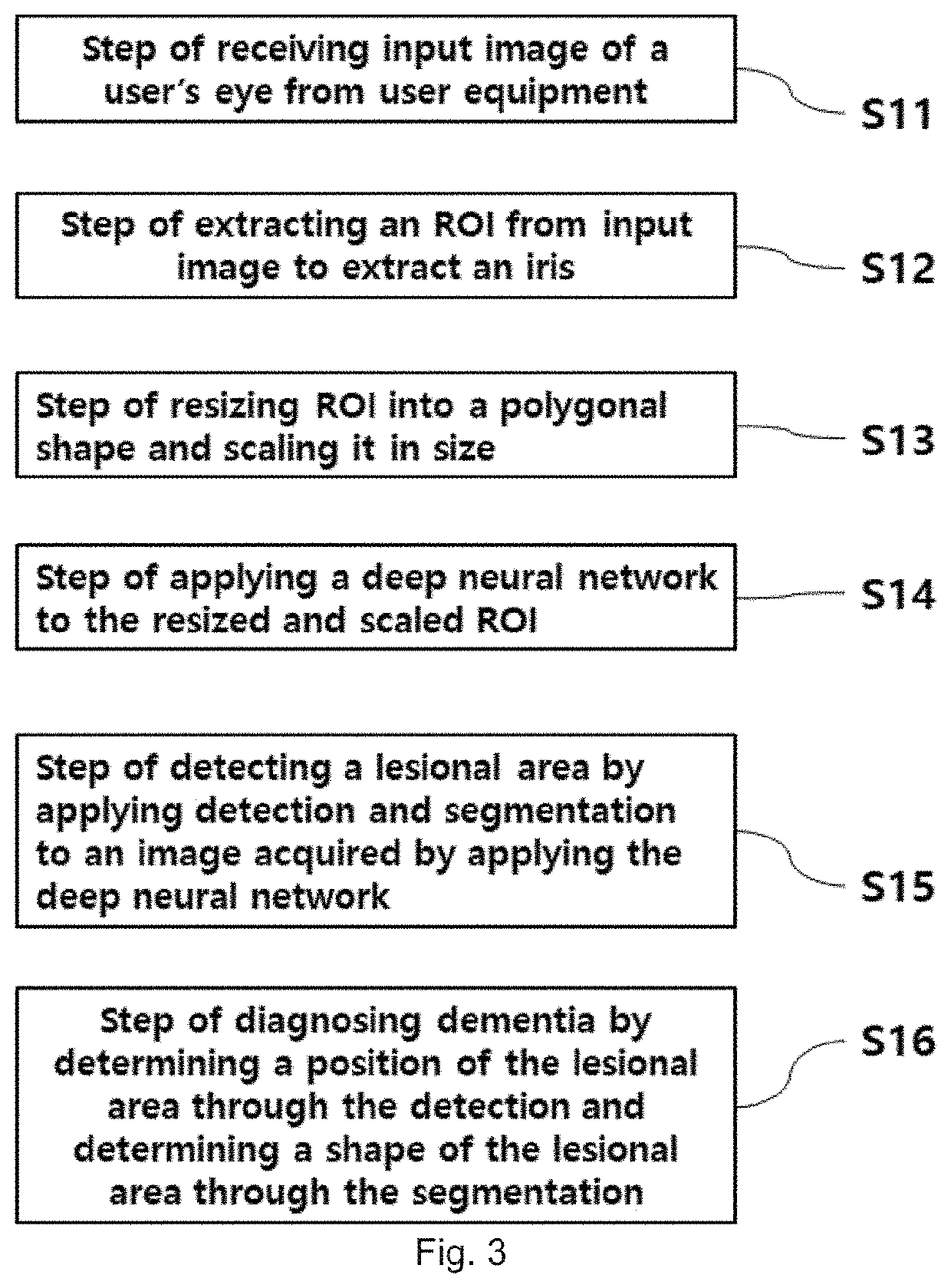Method of analyzing iris image for diagnosing dementia in artificial intelligence
a technology of artificial intelligence and iris image, applied in image enhancement, instruments, applications, etc., can solve the problems of cognitive abilities degraded by alzheimer's disease, behavioral symptoms and personality changes, behavioral symptoms, etc., and achieve low processing rate, accurate diagnosis, and low hardware performance
- Summary
- Abstract
- Description
- Claims
- Application Information
AI Technical Summary
Benefits of technology
Problems solved by technology
Method used
Image
Examples
Embodiment Construction
[0041]Hereinafter, exemplary embodiments of the present invention will be described in detail with reference to the accompanying drawings. A detailed description to be disclosed below together with the accompanying drawings is to describe the exemplary embodiments of the present invention, and various modifications and alterations can be made from the embodiments. The detailed description does not represent the sole embodiment for carrying out the present invention.
[0042]The embodiments are provided merely to fully disclose the present invention and completely inform those of ordinary skill in the art of the scope of the present invention. The present invention is defined by only the scope of the claims.
[0043]In some cases, known structures and devices may be omitted or block diagrams mainly illustrating key functions of the structures and devices may be provided so as to not obscure the concept of the present invention. Throughout the specification, like reference numerals will be ...
PUM
 Login to View More
Login to View More Abstract
Description
Claims
Application Information
 Login to View More
Login to View More - R&D
- Intellectual Property
- Life Sciences
- Materials
- Tech Scout
- Unparalleled Data Quality
- Higher Quality Content
- 60% Fewer Hallucinations
Browse by: Latest US Patents, China's latest patents, Technical Efficacy Thesaurus, Application Domain, Technology Topic, Popular Technical Reports.
© 2025 PatSnap. All rights reserved.Legal|Privacy policy|Modern Slavery Act Transparency Statement|Sitemap|About US| Contact US: help@patsnap.com



